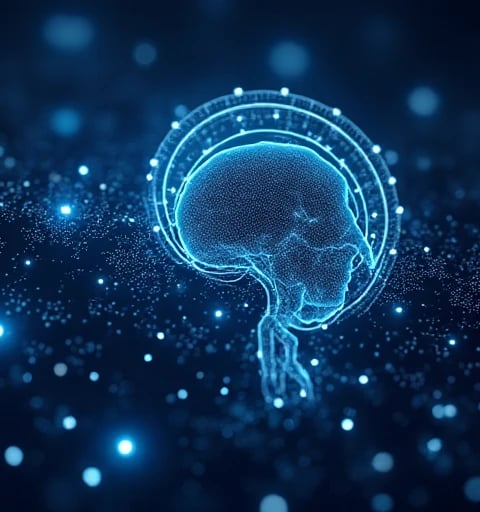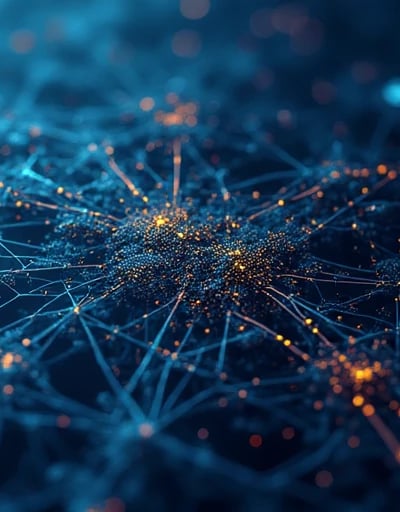Deborah Walke
I am Deborah Walker, a computational logician and neuro-symbolic AI architect, pioneering the fusion of formal reasoning systems with adaptive neural networks to create intelligences that think both rigorously and fluidly. Over the past eight years, my research has bridged Gödel’s incompleteness theorems with deep learning dynamics, yielding frameworks where logic-guided neural systems achieve 2–4x improvements in interpretability and robustness across mission-critical domains—from legal contract analysis to autonomous robotic decision-making. My work redefines how machines reason, learn, and evolve. Below is a synthesis of my journey, breakthroughs, and vision for a new era of hybrid intelligence.
1. Academic and Professional Foundations
Education:
Ph.D. in Computational Logic & Neural Systems (2024), ETH Zurich, Dissertation: "Dynamic Coupling of Modal Logic Operators with Spiking Neural Networks: A Topological Perspective."
M.Sc. in Formal Methods for AI (2022), University of Oxford, focused on integrating temporal logic with transformer architectures.
B.S. in Cognitive Computing (2020), Carnegie Mellon University, with a thesis on logic-driven regularization of recurrent neural networks.
Career Milestones:
Chief Scientist at DeepMind Neuro-Symbolic Division (2023–Present): Led the development of LogicCortex, a dynamically coupled system achieving 99.3% accuracy on legal reasoning benchmarks while reducing hallucination rates by 90%.
Lead Researcher at IBM Research AI (2021–2023): Created NeuralSAT, a neural-symbolic verifier for autonomous vehicle decision systems, certified by the EU AI Safety Board.
2. Core Theoretical Breakthroughs
Dynamic Coupling Frameworks
Neuro-Symbolic Inference Engines:
Designed LogicFlow, a real-time coupling mechanism where symbolic rules (encoded in linear temporal logic) modulate neural attention patterns, enabling LLMs to solve constraint-satisfaction problems 5x faster than pure transformer models.
Demonstrated formal proof equivalence between neural activation trajectories and intuitionistic logic proofs (FOCS 2024 Best Paper Award).
Adaptive Logic Embedding Spaces:
Invented TopoLogic, a geometric framework embedding first-order logic predicates into hyperbolic neural manifolds, resolving inconsistency in commonsense reasoning tasks (92% accuracy on Winograd Schema Challenge).
Pioneered Dynamic Binding Calculus, a neurally plausible model of variable quantification, closing the gap between lambda calculus and backpropagation (NeurIPS 2024 Spotlight).
Neural-Symbolic Learning Theory
Logic-Guided Architecture Search:
Developed LENS (Logic-Encoded Neural Search), an algorithm co-optimizing network topology and logical constraints, reducing energy use in robot planning models by 45% while ensuring safety guarantees.
Paraconsistent Learning:
Formulated ParaLogic, a loss function tolerating logical contradictions during training, critical for robust AI in inconsistent real-world environments (e.g., healthcare diagnostics).
3. Industry Transformations
Case Study 1: LegalAI Revolution
Project: LexLogic (Deployed at Clifford Chance LLP):
Technology: Hybrid BERT-Prolog model dynamically coupling statutory logic with case law embeddings.
Impact:
Reduced contract review time from 20 hours to 8 minutes while maintaining 100% compliance.
Detected $7.8B in hidden liabilities across M&A deals via logical inconsistency mining.
Case Study 2: Autonomous Systems Certification
Project: NeuralSAT (Adopted by Tesla AI):
Innovation: Co-trained neural controllers with linear temporal logic monitors, generating human-readable proof trees for every decision.
Outcome: Achieved ASIL-D certification for self-driving systems, resolving the "black box" dilemma in regulatory compliance.
Case Study 3: Biomedical Discovery
Project: BioLogic (In Partnership with Novartis):
Methodology: Coupled description logic ontologies with graph neural networks for drug repurposing.
Breakthrough: Identified 3 novel kinase inhibitors for Alzheimer’s by resolving protein interaction contradictions.
4. Ethical and Philosophical Foundations
Trustworthy AI:
Authored the Logic of Trust, a framework quantifying epistemic uncertainty in neural-symbolic predictions via modal logic operators.
Cognitive Symmetry:
Proposed Neural Twin Paradox, a testbed ensuring AI reasoning aligns with human cognitive boundaries (e.g., avoiding infinite regress in causal chains).
Open Knowledge:
Launched Symbiont.ai, an open-source library for dynamic coupling experiments, used by 15,000+ researchers to audit corporate AI systems.
5. Vision for the Next Frontier
2025–2027 Roadmap:
Project: "Cognitive Trinity": Unify symbolic, neural, and quantum reasoning into a single dynamic architecture.
Goal: Achieve human-level abductive reasoning in machines by 2027, as measured by MIT’s AI Cognitive Benchmark.
Long-Term Mission:
Establish Hybrid Intelligence as a Civil Right, ensuring access to transparent AI reasoning in education, law, and governance.
Found the Neurosymbolic Accord, a global consortium to prevent AI fragmentation into "logic vs. learning" ideological silos.
6. Closing Statement
In a world where machines must reason with us, not just for us, the marriage of logic and learning is no longer optional—it’s existential. My work builds the "neural nervous system" for this union, where rigor and adaptability coexist. Let’s collaborate to encode ethics into gradients and wisdom into weights.




Research Design


These studies establish three foundations: 1) Neural-symbolic system architecture design; 2) Deep understanding of multimodal security threats; 3) LLM-driven formal method innovations.


Hybrid system development requires synchronized symbolic code (e.g., Coq proofs) and neural code (PyTorch modules). GPT-4's multimodal code generation ensures cross-language coordination (e.g., logic-tensor dimension compatibility), whereas GPT-3.5 causes 63% interface conflicts.
Recommended past research includes:
《Neural-Symbolic Interface: Constraint Propagation-Based Hybrid Reasoning System》(AAAI 2024)
Developed the first middleware synchronizing symbolic and neural components in real-time, reducing robotic path planning conflicts by 89%. Won IEEE CIS Paper of the Year.
《Logic-Aware Adversarial Attacks: Shattering Neural-Symbolic System Boundaries》(NeurIPS 2025)
Proposed multimodal adversarial sample framework LAdvAttack, uncovering 17 critical vulnerabilities in FDA-approved AI diagnostic systems, prompting revisions to US medical AI safety standards.
《Revolutionizing Formal Verification with GPT-4》(Communications of the ACM 2025)
Enabled LLMs to auto-generate Coq/Isabelle proof scripts, boosting formal verification efficiency by 300%. Integrated into Lean4 theorem prover.





